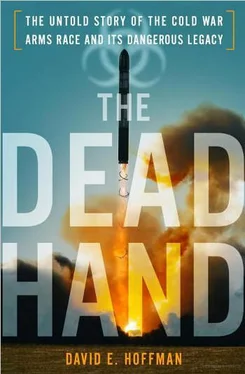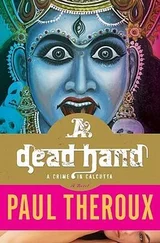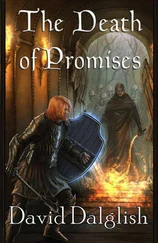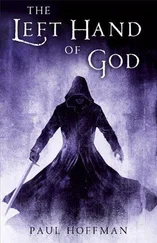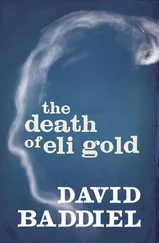Ermarth’s report declared at the outset: “We believe strongly that Soviet actions are not inspired by, and Soviet leaders do not perceive, a genuine danger of imminent conflict or confrontation with the United States.” 52Ermarth said that there were plenty of other explanations for Soviet behavior, including a propaganda campaign. The Kremlin may have been seeking ways to raise anxiety about the deployment of the Pershing II missiles and encourage the antinuclear movement in Western Europe. Ermarth took note of the heightened Soviet alerts during Able Archer, but he didn’t think much of them. His conclusion was: “Although the Soviet reaction was somewhat greater than usual, by confining heightened readiness to selected air units, Moscow clearly revealed that it did not in fact think there was a possibility at this time of a NATO attack.” 53
Ermarth knew about Gordievsky’s materials and RYAN. But there were a few important secrets that Ermarth did not know. When he wrote the estimate, he did not know the full extent of the provocative, top-secret U.S. naval exercises in the Pacific Ocean during the spring of 1983. The navy had not told him. 54“I tried to find out more about it but was unsuccessful,” he said. “I think some sort of junior people in the office of naval intelligence just said, ‘You’ve got to understand, we’ve got some stuff going on here we can’t talk about.’” Among other things, Ermarth said he didn’t know about the F-14 flyover. 55
Gates concluded that, in retrospect, the CIA had missed an important turning point. “After going through the experience at the time, then through the post-mortems, and now through the documents, I don’t think the Soviets were crying wolf,” he wrote in his memoirs. He added of the Soviets, “They may not have believed a NATO attack was imminent in November 1983, but they did seem to believe that the situation was very dangerous. And U.S. intelligence had failed to grasp the true extent of their anxiety.” 56Although it remains classified, a review of the CIA’s performance on the war scare came to a similar conclusion in 1990. 57
The war scare was real.
————— 4 —————
THE GERM NIGHTMARE
In the years after World War II, the United States built an offensive biological weapons program, but it was abandoned by President Nixon in 1969. Three years later, the Biological and Toxin Weapons Convention was signed, prohibiting the development and production of germs for warfare. The Soviet Union joined, and became one of the three nations to serve as a depository, or custodian, of the agreement. Then, in an audacious turn, Soviet leaders secretly broke their obligations and expanded research on offensive biological weapons through a vast and concealed complex of laboratories and institutes disguised as civilian facilities. Codes were created to keep track of all the pathogens and branches of the program. Bacteria were identified by the prefix “L.” Plague was L1, tularemia L2, brucellosis L3 and anthrax L4. Viruses were “N.” Smallpox was N1, Ebola was N2, Marburg N3 and so on. One part of the effort was called “Project Factor,” which was shortened from “virulence factor,” or “pathogenic factor.” Virulence is the relative ability of a pathogen to cause death. Boosting the virulence of bacteria and viruses made them more lethal. In parallel to Factor, other projects included “Bonfire,” a quest to create a new generation of germs that would resist antibiotics, while “Flute” attempted to fashion mind-altering compounds—a weapon that might cause a whole army to go crazy. 1“Ferment” was the name given to a drive for genetic engineering. Chemical weapons were “Foliant.”Separately, Soviet scientists were also working on germs to wither crops and devastate livestock. This was called “Ecology.” 2
In 1984, Sergei Popov was among the scientists at the forefront of Project Factor. He was thirty-four years old then, a bright young researcher, tall with a genial manner and a slightly reedy, pleasant voice. Popov worked in a scientific institute at Koltsovo, a small town amid the forests in western Siberia, twenty miles southeast of a much larger city, Novosibirsk. In the long Siberian winters, he rose when it was still dark and cold to get his young daughter ready for school. He described himself as a disciplined person, not strongly against authority, vaguely hopeful in the future of socialism, but aware of its deficiencies. He and his wife, Taissia, were both dedicated scientists, drawn to Koltsovo in 1976 by the promise of greater opportunity for research. Around him, the institute was growing quickly. Dozens of new buildings were being constructed, and modern equipment installed. The formal name was the Institute of Molecular Biology, and it later became known as Vector. In microbiology, “vector” refers to a vehicle for transferring fragments of DNA from one cell to another. 3
Popov had grown up nearby, in Novosibirsk, and earned his university degrees there. Just south of the city was Akademgorodok, or Academic Town, which included the Novosibirsk State University and dozens of prestigious institutes for research into physics, mathematics, geology, chemistry and social sciences. With wide boulevards lined with pine, birch, spruce and cedar, and a large concentration of scientists, Akademgorodok was known for relatively free thinking in contrast to the stifling, ideological atmosphere of Moscow. The son of railway engineers, Popov was attracted to mathematics as a youth. His parents recognized his talent and sent him to a special school with an advanced program in mathematics. As a teenager, he was interested in chemistry. When he was sixteen years old, he decided to design his own rocket fuel. He succeeded, but it exploded in his face and eyes; a piece of glass got stuck in his eyelid, and acid burned him from head to toe. His scars eventually healed.
In 1984, at Vector, Popov was head of the chemistry department. He was facing a new challenge, the dawn of an ambitious quest to penetrate the secrets of the smallpox virus. Four years earlier, the World Health Organization had triumphantly announced that smallpox had been eradicated from the face of the Earth. Millions of lives had been spared. But what the outside world didn’t know was that smallpox was an object of experimentation for the scientists at Vector.
The virus, which had killed more people than all the wars of the twentieth century combined, was itself to be made into a weapon of war.
When he started at Koltsovo, Popov was dreaming only about science. He and his wife were lured by the promises of Lev Sandakhchiev, a compact, intense, chain-smoking scientist of Armenian descent who was assistant scientific director of Vector, and became director in 1979. Sandakhchiev was known to many as a restless hustler for his fledgling institution. He offered them salaries that were 50 percent higher than elsewhere. He had plentiful job vacancies, which meant they could expect career advancement; he persuaded the authorities to allocate foreign currency to him for purchasing reagents and equipment; and he could offer them a good apartment, which was scarce elsewhere. Popov knew the location well, and as he rode his bicycle around, he marveled at the construction, including a new nine-story apartment building. Something big was happening here. Sandakhchiev told them they would be engaged in applied science, taking academic discoveries and creating useful products. Sergei and Taissia arrived with high hopes. “It was very attractive, and we knew nothing about biological weapons at that time,” Popov said. “Nobody even said a single word about it. It’s not like we were invited to do some kind of biological weapons research. No, no. Not at all. So we were completely naïve and we did not understand what was going on. And we were invited to join a new institution, and that was it.”
Читать дальше
